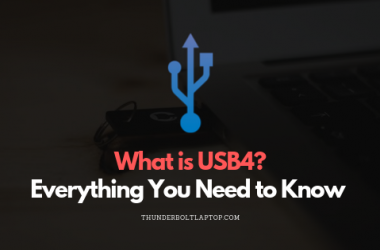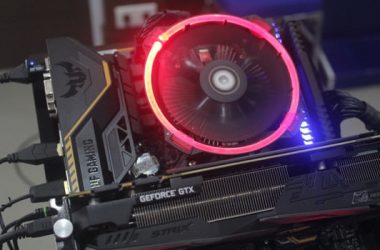The concept of laptops, which first started long back around the 1970s, was intended to build portable computers that could be carried around.
Today laptops are an all-weather companion for users all around the world. You can take your laptop on a holiday and yet spend the time back in the hotel being productive working on the laptop.
In the present age, connectivity is not defined by how many people you meet every day physically. It is simply defined by how active you are on the internet.
We are living in the best period in history and creating history every day with innovations, and in a few years, the internet will perhaps be the only link that connects human beings and everything around it. You just can’t miss out on the internet, and going offline is no longer a novelty.
Laptops and smartphones today have gone a long way in letting us stay connected through the internet. With a computer, all you need is a LAN cable in the RJ45 jack or a broadband Wi-Fi network, and you are good to go.
However, public Wi-Fi is still not that widespread, and if you end up in one of the world’s developing nations, the chances are high that you might be left stranded without reliable public Wi-Fi. For those scenarios and numerous other cases where you would wish you had your own internet, you should get devices with a Wireless Wide Area Network access card.
Did you know that a WWAN card is similar to having a smartphone embedded in your laptop or desktop? Just as you can avail the internet from anywhere if your smartphone can manage a signal, a WWAN card gets your laptop or desktop connected to the internet even without broadband Wi-Fi or wired internet as long as there is a telecom network signal.
Table of Contents
What is Wireless Wide Area Network or WWAN Technology?
WWAN is a type of wireless network that covers a vast area in comparison to Local Area Networks. Internet connectivity is achieved through cellular technology through a 4G or 5G modem installed in your PC or laptop. A sim slot holds a sim card with a data plan that is either tied to your mobile’s data plan or independently has a data plan of its own. With this sim card on your laptop, you can access the internet the same way you do with your smartphone.
An excellent example of WWAN is connecting your smartphone via a cable to the laptop and enabling the USB Tethering option. The smartphone acts as the modem and allows you to access the internet using the mobile sim card’s data plan. This, however, might cause a fluctuation in speed and is only a crude alternative to dedicated WWAN cards on a desktop or laptop.
How do WWAN Cards work?
WWAN guarantees internet virtually everywhere as long as there is a mobile signal. In many laptops, a WWAN card is in-built, and where there is none, you would need a WWAN card.
There are plenty of WWAN modules that come with Mini PCI-E or M.2 interfaces which you need to buy separately along with the sim card and an all-in-one WWAN card on a USB interface. The module and the sim card go into the WWAN card, which works on 5V USB ports.
Depending on where you need the service, you need to match the banding of the cellular network providers available with the ones supported by your WWAN module and get the data plans accordingly.
For example: If your WWAN module supports LTE over 2100, 1900, and 1800 MHz spectrums in Europe, you need to look for cellular network providers who operate 4G or LTE service on these bands, such as T-Mobile that provides LTE on 1900MHz and 850MHz bands and hence you need a T-Mobile sim with a data plan.
Types of Wireless Wide Area Networks
Since WWAN works on the same principles as mobile internet, there are mainly four types of networks that WWAN supports, of which 2G is on the verge of becoming obsolete, and 3G is getting ready to follow suit.
4G
4G is the most widely prevalent through LTE Advanced supported WWAN cards installed in Microsoft Surface Pro 7 Plus devices. 4G technology has been active since 2009 with a CDMA access system and a 100Mhz bandwidth that can support at max high-speed internet applications and streaming services.
With 4G WWAN, users are expected to get around 17-20 Mbps average speeds on their mobile data plan to support interactive multimedia access and voice and video calls.
[orangebox]Currently, most networks do not deliver the actual 4G speed, which should be close to 100 Mbps average, and hence they are not technically 4G and try to achieve 4G requirements through 4G LTE.[/orangebox]5G
With worldwide developments ongoing on testing and deploying 5G, some countries like the US have already started commercial use in quite a few cities.
Some of the latest offerings from Dell, such as the business-focused latitude 9510 2-in-1, comes with an inbuilt Qualcomm X55 5G modem that supports 5G sim cards from various US carriers. 5G is a massive leap over 4G with average speeds exceeding 100 Mbps right now and is designed keeping IoT in mind.
It enables high-resolution streaming of media, interconnectivity between devices, remote control of vehicles, and remote medical procedures that need incredibly high speed and bandwidth.
WWAN with 5G capabilities operates on a 30-300 GHz bandwidth that allows up to 1 Gbps speed enough for automated driverless cars to work.
Difference Between WWAN and Wireless LAN
WWAN and WLAN may sound similar, but they work differently. Wireless Local Area Network is interchangeably called Wi-Fi. Internet in wired broadband enters a router and is then distributed wirelessly to the devices connected to the router.
Wi-Fi is more of a single network, but WLAN is the entire distribution system itself. WLAN scores a lot in its ability to remove the clutter of wires, but its range is pretty limited.
Even a robust distribution system can go only as far as a local area inside a city.
WWAN has coverage areas ranging to significant parts of an entire country as it depends on telecom signals.
In some specific scenarios, WLAN could be cheaper than WWAN as there could be costly plans from telecom service providers that range from daily data pass to pay-as-you-use plans, especially on roaming. WWAN works on mobile communication technologies like WIMAX, GSM CDMA, etc.
Currently, 4G, 4G LTE, and 5G are the fastest cellular technologies available for laptops with WWAN cards.Another difference between WLAN and WWAN is the infrastructure cost you need to incur in getting up and running. Wireless WAN scores a ton over WLAN in this category as the infrastructure is built by telecom network providers with their signal towers installed worldwide. You just need a WWAN card which in most scenarios could come pre-installed on your laptop, and a sim card that would usually come with a data plan.
In the case of WLAN, you would need a good quality router along with a broadband plan, but even then, you would be pretty limited with your coverage area. You need to invest more in Wi-Fi extenders and public Wi-Fi to have a better range, but you might need to pay for the data you want to use. The overall investment in the pieces of equipment you would need is higher.
The most significant difference is that mobile data is secured compared to public or broadband Wi-Fi data.Telecom companies provide mobile data that is secured via encryptions that are extremely difficult to break, while public and broadband Wi-Fi is not secured, and you could have a lot of people using the same network, which again is absent in WWAN.
Conclusion
WWAN cards are gaining popularity, with many laptop manufacturers opting to include them in their business offerings. Heavy business users might need to stay connected with their work, and even minor downtimes on their part could result in losing millions for their organizations.
Laptops with a WWAN card allow these individuals to stay in touch with their peers even on a holiday. However, with the emergence of smartphones and advancements in their technology, computing is now possible in even smaller form factors.
Smartphones can already access the internet through cellular networks, but until they entirely replace laptops as full-fledged mobile computing devices, WWAN cards still have an untapped market to aim at.
Wireless WAN Cards – FAQ
Is WWAN an alternative for WLAN?
WWAN and WLAN have similar features that allow access to the internet but operate on different technologies. WLAN works on broadband service distributed locally via routers, while WWAN works on accessing the internet through cellular technology spread through mobile signal towers.
Are WWAN Cards costly?
WWAN cards combine three components: A PCI-E to USB adapter (Amazon Link), a WWAN module (Amazon Link) that goes inside the PCI-E slot of the adapter, and a sim card with a data plan.
That is a modest cost but comes with many upsides, especially when staying online in remote areas is the priority. You can make a WWAN card yourself if your laptop doesn’t come with one using the above components.
Can I Use My Smartphone for WWAN?
Smartphones can work as WWAN through the USB Tethering option in the settings menu. This feature uses the smartphone as a modem to share the data plan on the phone’s sim card to a laptop. You need to connect the phone to the computer using a USB cable for tethering but do not need any extra drivers for the setup. You can also use wireless tethering to set up a hotspot on your mobile, which your laptop can get connected to.
What are the different bands on which WWAN cards work?
Mobile network providers broadcast signals on different spectrums that are supported by WWAN cards. LTE, for example, works on 2100 MHz, 1900 MHz, 1800 MHz, 1700 MHz AWS and few other spectrums, and 5G works on 700MHz, 3.5GHz, and 26 GHz spectrums.
Different WWAN cards support all or some of these spectrums and can access the internet through cellular signals broadcasted over those spectrums.




